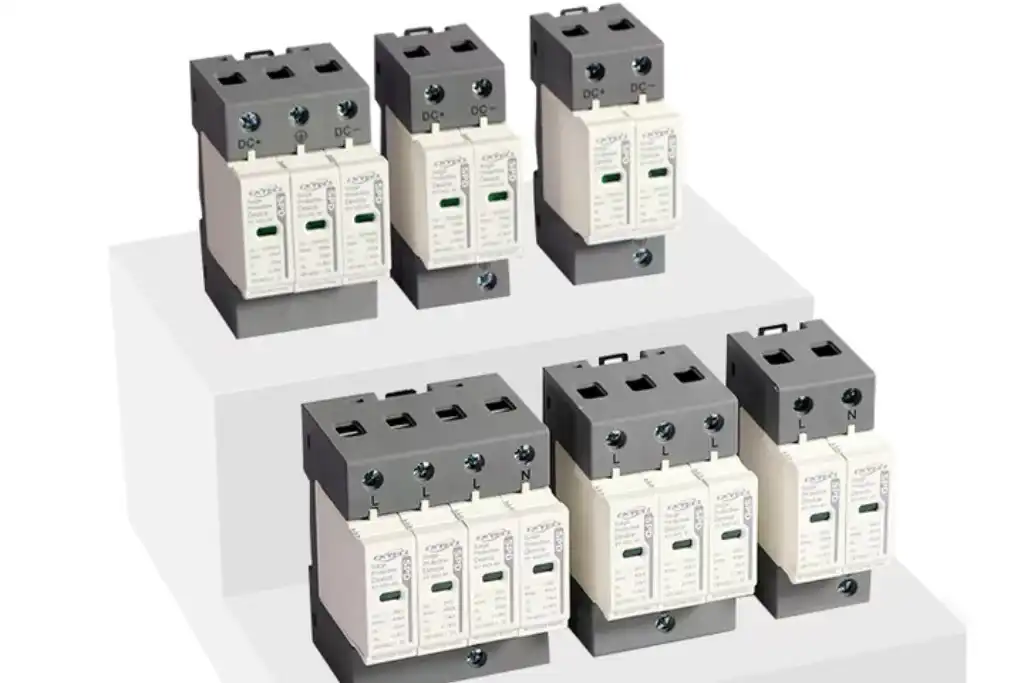A surge protector (SPD) is an electrical component used to protect electrical equipment from damage caused by surges and transient overvoltages. It is usually installed in the distribution box for the secure and stable functioning of the building’s or home’s overall electrical system.
Surge is usually caused by power stroke, switching operations on power lines, electrostatic discharge, and other reasons, which will cause serious damages to sensitive electrical equipment and electronic devices. Installing surge protectors can effectively prevent these damages and improve the system safety. In this article, the five benefits of installing surge protectors in distribution boxes are introduced.
1. Protect against lightning and prevent equipment damage
The transient overvoltage caused by lightning discharge can be in thousands of volts, far beyond the tolerance limits of normal equipment. Surge protectors use internal metal oxide varistors (MOVs) or gas discharge tubes to short-circuit quickly the lightning energy into the ground system, to avoid high-voltage surges that can result in equipment short circuits, burn, or explosions
Example: Data shows that in areas with high lightning strikes, the damage rate of electronic equipment can be increased by more than 60% in distribution systems without SPD installed
2. Extend equipment lifespan and reduce maintenance costs
Operating overvoltage (such as switch action, resonance) and surge current generated by induced lightning in the power system can accelerate equipment aging. SPD continuously monitors voltage fluctuations, absorbs abnormal energy in a timely manner, and reduces performance degradation of equipment caused by frequent voltage surges
Research has shown that installing SPD can extend the average lifespan of industrial equipment by 30% -50% and reduce maintenance costs by 40%
3. Comply with safety regulations
Multiple countries around the world have mandated that power distribution systems must be equipped with surge protectors. For example, the Chinese “Code for Design of Lightning Protection of Buildings” (GB 50057-2010) explicitly requires the installation of Class I SPDs in the main distribution box. Failure to comply with installation regulations by businesses or residences may result in insurance refusal or legal liability
4. Improve system stability and reduce power outage losses
Surge in power makes the equipment breakdown and can even trigger cascaded power outages and particularly inflict major losses to core facilities such as production lines and servers. SPD forms leakage step-by-step protection by multi-level protection (for instance, Class I to protect the main distribution box and Class II for distribution box) for maintaining supply of power continuous
5.Flexible adaptation to different scenarios
Modern SPD design balances universality and customization, and can adapt to different voltage levels (220V-380V) and scene requirements
For example:
Family scenario: C-level SPD (20kA-40kA) protects home appliances and smart devices
Industrial scenario: T1 level SPD (10/350 μ s waveform) to cope with direct lightning risk, combined with backup protector (SCB) to enhance safety
New energy field: Photovoltaic system dedicated SPD solves DC side surge problem
Here are some information that you may have just been interested in:
Is the location of installing surge protectors important?
Is the location of installing surge protectors important?
What You Need to Know About Surge Protection Device Lifespan



